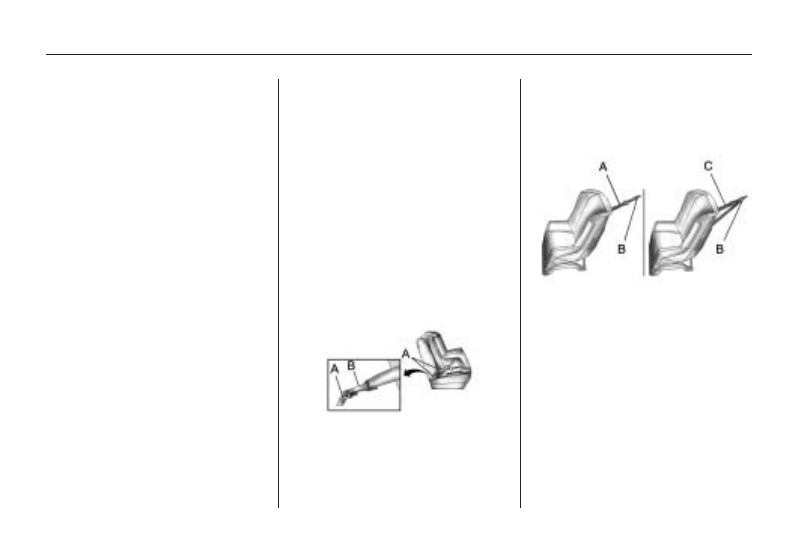Buick Enclave (2009 year). Manual - part 3

Lower Anchors and
Tethers for Children
(LATCH)
The LATCH system holds a child
restraint during driving or in a crash.
This system is designed to make
installation of a child restraint easier.
The LATCH system uses anchors
in the vehicle and attachments
on the child restraint that are made
for use with the LATCH system.
Make sure that a LATCH-compatible
child restraint is properly installed
using the anchors, or use the
vehicle’s safety belts to secure the
restraint, following the instructions
that came with that restraint,
and also the instructions in this
manual. When installing a
child restraint with a top tether, you
must also use either the lower
anchors or the safety belts to
properly secure the child restraint. A
child restraint must never be
attached using only the top tether
and anchor.
In order to use the LATCH system
in your vehicle, you need a child
restraint that has LATCH
attachments. The child restraint
manufacturer will provide you with
instructions on how to use the
child restraint and its attachments.
The following explains how to attach
a child restraint with these
attachments in your vehicle.
Not all vehicle seating positions or
child restraints have lower anchors
and attachments or top tether
anchors and attachments.
Lower Anchors
Lower anchors (A) are metal bars
built into the vehicle. There are
two lower anchors for each LATCH
seating position that will
accommodate a child restraint with
lower attachments (B).
Top Tether Anchor
A top tether (A, C) anchors the
top of the child restraint to the
vehicle. A top tether anchor is built
into the vehicle. The top tether
attachment (B) on the child restraint
connects to the top tether anchor
in the vehicle in order to reduce the
forward movement and rotation
of the child restraint during driving
or in a crash.
1-34
Seats and Restraint System